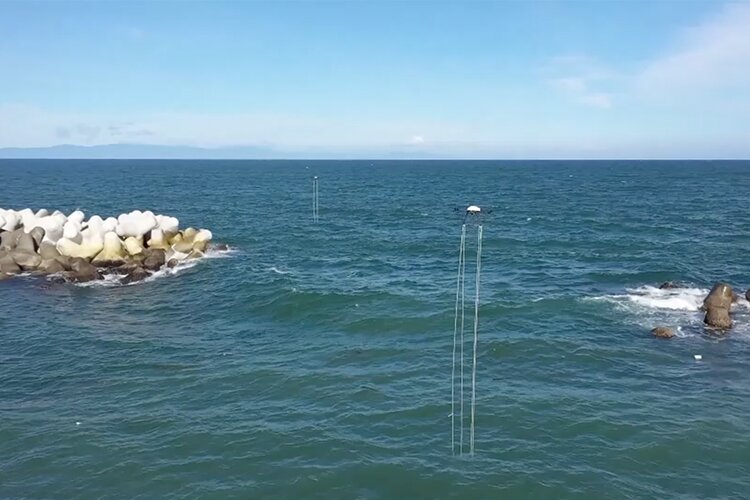#Drones show promise in speeding up communication with underwater robots for ocean surveys

“#Drones show promise in speeding up communication with underwater robots for ocean surveys”

Researchers from The University of Tokyo Institute of Industrial Science find that drones may be the next generation of communication bases to monitor the ocean and seafloor because of their high-speed positioning, stability, and efficiency.
To conduct ocean surveys, sensors mounted on underwater robotic devices are typically used in communication with sea-surface base stations. Researchers from Japan have found a promising way to optimize this underwater communication.
In a study published this month in Remote Sensing, researchers from The University of Tokyo Institute of Industrial Science revealed that unmanned aerial vehicles (UAVs), commonly referred to as drones, show promise as communication bases with robotic devices known as autonomous underwater vehicles (AUVs) for ocean surveys.
AUVs are commonly used for underwater survey missions and monitoring the seafloor because they can obtain detailed seafloor images and information. Sea-surface base stations are a necessary partner to the AUVs to obtain absolute positions and real-time data because ocean water weakens the transmitted radio wave signals. However, these base stations have low mobility and drift with sea disturbances. Thus, to optimize this underwater communication, researchers at The University of Tokyo Institute of Industrial Science aimed to address these limitations with devices that would be more efficient, fast, and stable.
“Because sea-surface vehicles cannot efficiently achieve high-speed observations, we examined whether UAVs could be used as a base station for underwater communication with an AUV,” explains lead author Yusuke Yokota. “UAVs can travel at 50 km/h or more and they are not affected by ocean currents or other perturbations, making them ideal candidates for this application.”
To do this, the researchers first observed whether the UAV could land on a sea surface and lift off to return to its base. They then studied the underwater communication using two UAVs (with one imitating an AUV) to find out the distance stability between the hovering and underwater devices. Finally, the researchers examined the sea-surface sway of a UAV used as a buoy.
“The results are very exciting,” says Takumi Matsuda, second author of the study. “The application of UAVs will reduce the cost of many ocean observation operations.”
In addition to the distance stability between the hovering and underwater devices, the UAV was functional as a measurement buoy under wind speeds of 5–10 m/s and wave height of ~1 m.
“Our results suggest that because of their robust hovering control, stability against sea-surface sway, and operation speed, UAVs may be a suitable communication platform with AUVs in ocean surveys up to a distance of approximately 1 km from the shore,” says Yokota. “However, further research is necessary before we can carry out more complicated work with them.”
Plugging into ocean waves with a flexible, seaweed-like generator
Yusuke Yokota et al, Underwater Communication Using UAVs to Realize High-Speed AUV Deployment, Remote Sensing (2021). DOI: 10.3390/rs13204173
Citation:
Drones show promise in speeding up communication with underwater robots for ocean surveys (2021, October 29)
retrieved 30 October 2021
from https://techxplore.com/news/2021-10-drones-underwater-robots-ocean-surveys.html
This document is subject to copyright. Apart from any fair dealing for the purpose of private study or research, no
part may be reproduced without the written permission. The content is provided for information purposes only.
If you liked the article, do not forget to share it with your friends. Follow us on Google News too, click on the star and choose us from your favorites.
For forums sites go to Forum.BuradaBiliyorum.Com
If you want to read more Like this articles, you can visit our Science category.

